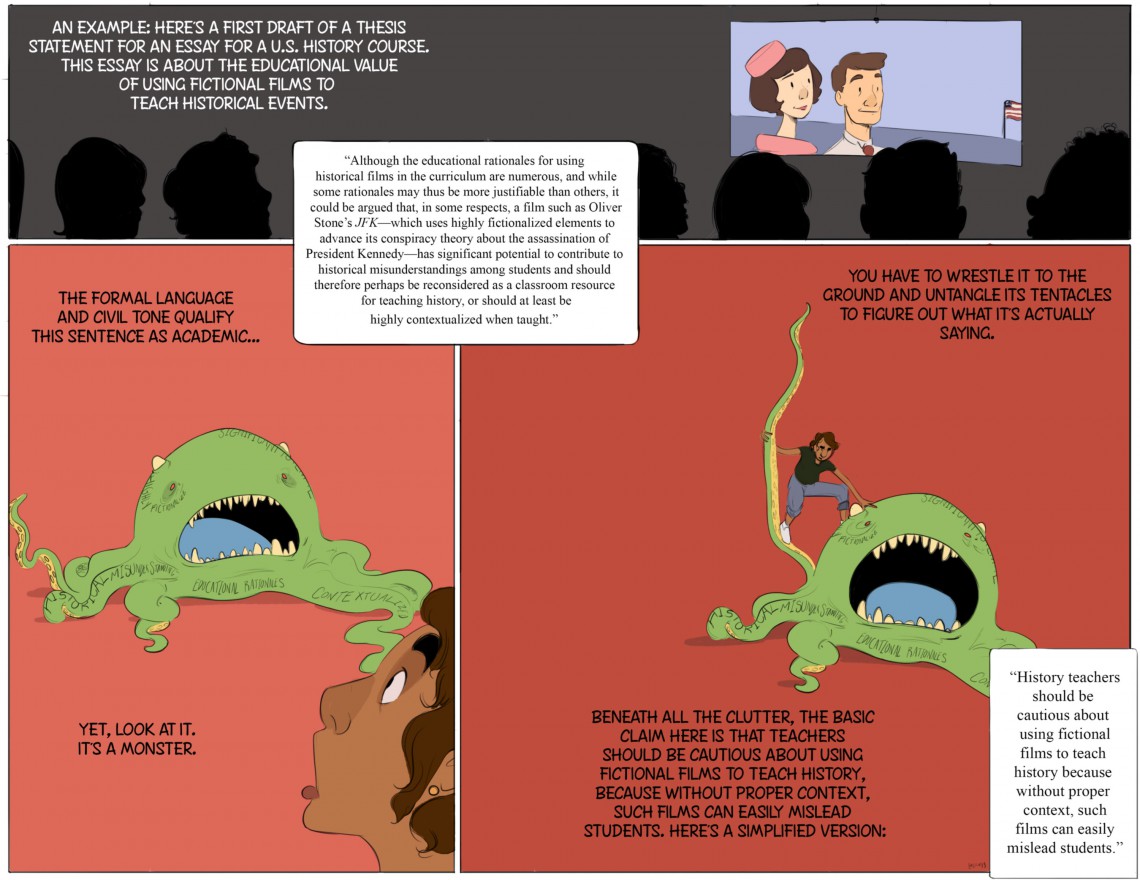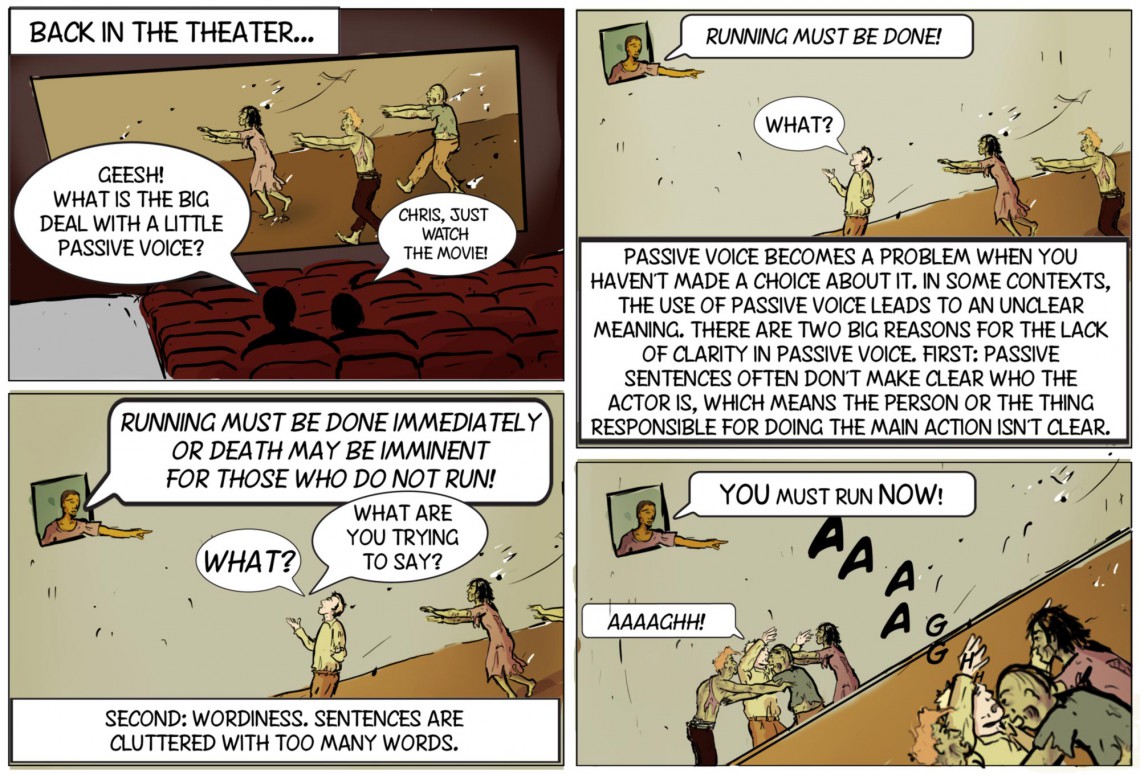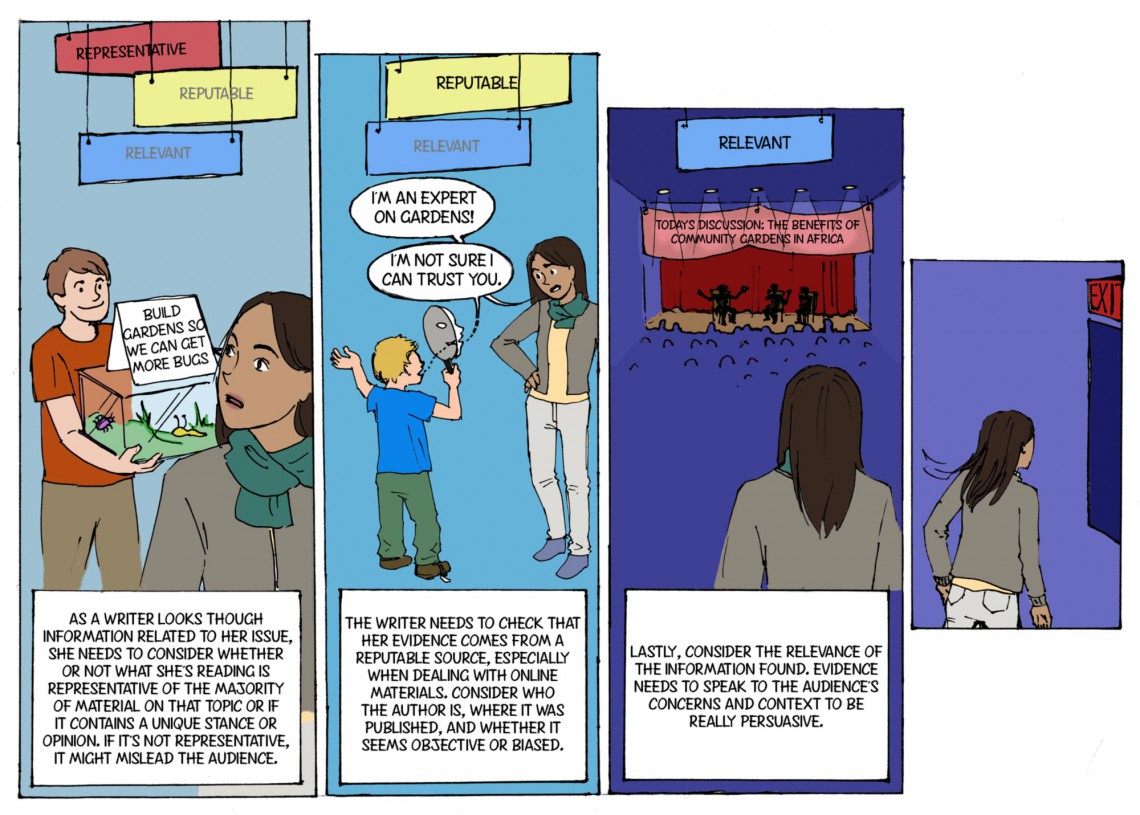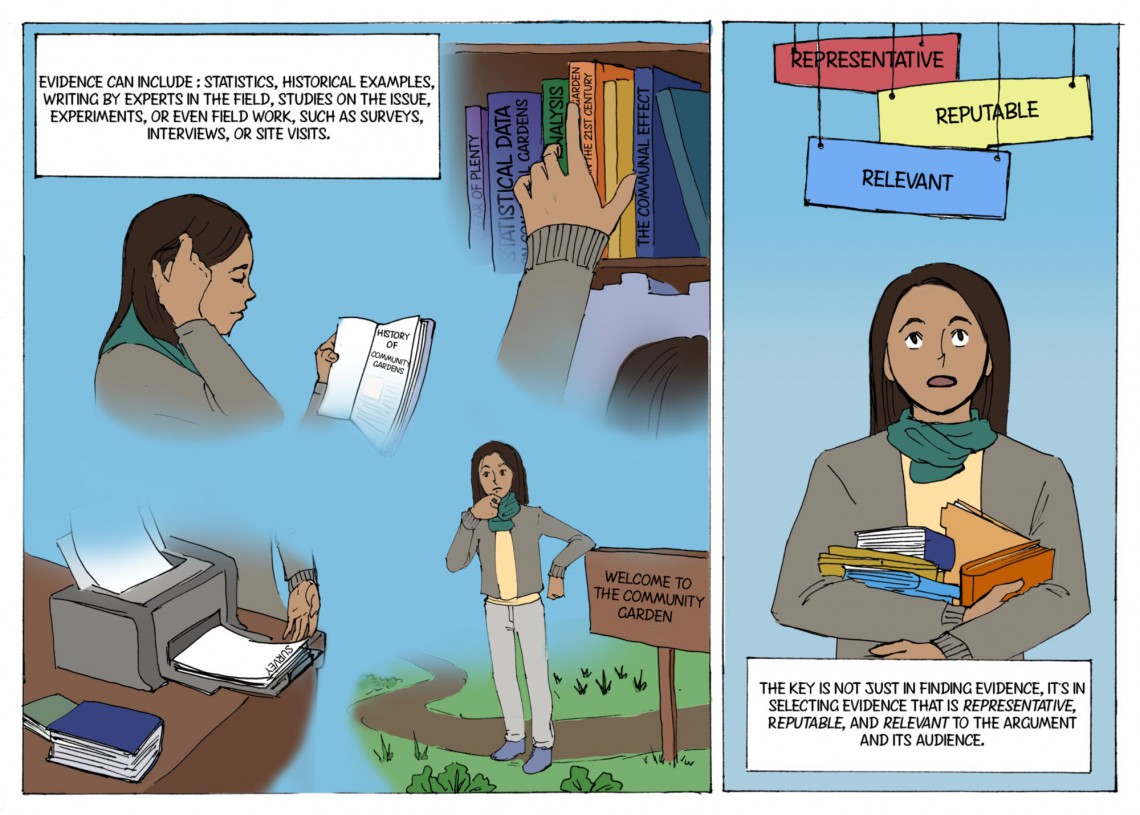Stanford students illustrate public online ‘Adventures in Writing’ class
Veteran writing instructors and undergraduate student artists teamed up to create a new public online course focused on teaching key strategies for effective writing.
After a team of Stanford writing instructors created storyboards for an online class to teach writing skills to high school and college students, they turned to a team of Stanford undergraduates to bring their stories to life as a graphic novel.
Adventures in Writing, a non-credit course, will be available to the public starting Jan. 12 through Stanford Online. The course is aimed primarily at 16- and 17-year olds through age 20.
The course follows “Maya” and “Chris” as they interact with each other and others at a movie theater, baseball game, carnival, community garden and concert hall, and, along the way, learn some essential principles of effective communication.
The online course is self-paced and takes six to eight hours to complete. It has five modules. Each module ends with writing exercises that reinforce the lesson and advance the storyline.
The course was commissioned by Stanford Continuing Studies and Stanford Summer Session. The university’s Program in Writing and Rhetoric will use the online course as supplemental material for writing courses for freshmen and sophomores, and to help teach college-level writing to high school students during the summer.
Instructors at Stanford’s Program in Writing and Rhetoric created the course.
Christine Alfano, the program’s associate director, said Adventures in Writing draws on a similar approach to the one instructors use to teach Stanford students.
“We’re hoping students who take the online class will see that writing is more than sitting in a classroom and writing papers,” she said. “We show Maya and Chris in a variety of different contexts. Through these narratives, we’re asking students to think about how these two people are learning to communicate effectively in a variety of situations.”
The five modules are:
- Introduction to Academic Language
- Purpose, Audience and Context: Language as Communication
- Identifying Passive and Active Voice
- Punctuation: Signposts to Guide Readers
- Argument: Making and Supporting Claims
Seven Stanford students – five illustrators and two colorists – created the graphic novel. Each image began with pen-and-ink drawings. The artists drew the comics by hand, created them on computers or used some combination of the two methods to produce the artwork.
Megan O’Connor, an academic technology specialist who assembled the team of student illustrators and colorists, said the students represented a variety of disciplines, including computer science; feminist, gender and sexuality studies; symbolic systems; mechanical engineering; and arts practice.
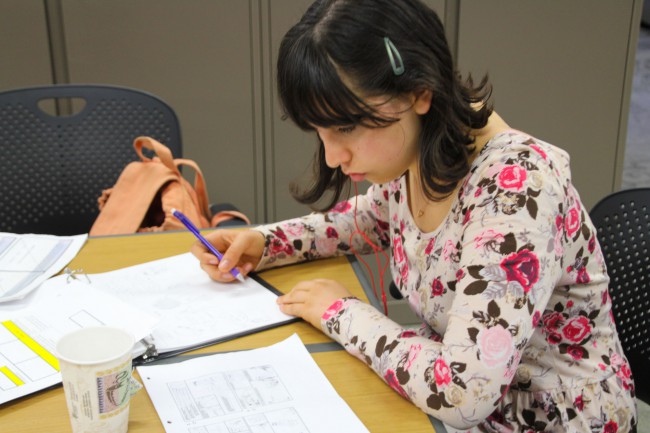
Student Emma Steinkellner working on preliminary sketches for a new public course on effective writing offered through Stanford Online. She said her illustration had to perform three functions: tell a story, entertain and educate.
Each illustrator created one module. Students worked together on the final pages, drawing and coloring panels on tables set up in a wide hallway in Sweet Hall.
“Being in Sweet Hall around all the instructors who teach this material was a blast,” said student artist Emma Steinkellner, a Stanford junior majoring in feminist, gender and sexuality studies. “Since all the artists were working on different story lessons, it was fun to sneak peeks at their work.”
Steinkellner, who worked on A Place Among the Stars: Thirteen Women and Their Quest for Space, the 2014 title of the Stanford Graphic Novel Project, said the comics for the writing class had to simultaneously perform three functions: tell a story, entertain and educate.
“The student artists spoke with the instructors so that we could understand how the writing lessons were supposed to be taught – and make them pack a visual punch,” she said.
Alfano said Adventures in Writing took about year to complete. During the summer of 2013, instructors worked alone and in teams to develop the modules and create stories – characters, plots and settings – for each lesson. They had long talks about how to bring pedagogy and story together in an engaging way.
“We had to think about the medium we were using,” Alfano said. “We couldn’t just say this character is going to say this and this character is going to say that. We had to think: Is this panel going to have a close-up of a character’s head? When a character is imagining a scenario, can we have that pop up in the background? How will this help make the writing instruction more engaging and effective? It was a great learning experience for us as writing instructors, because we were learning to be more creative as authors – and to think in those different modes ourselves.”
The student artists, who were paid for their work, joined the team and created the graphic novel during the winter of 2013 and spring of 2014.


